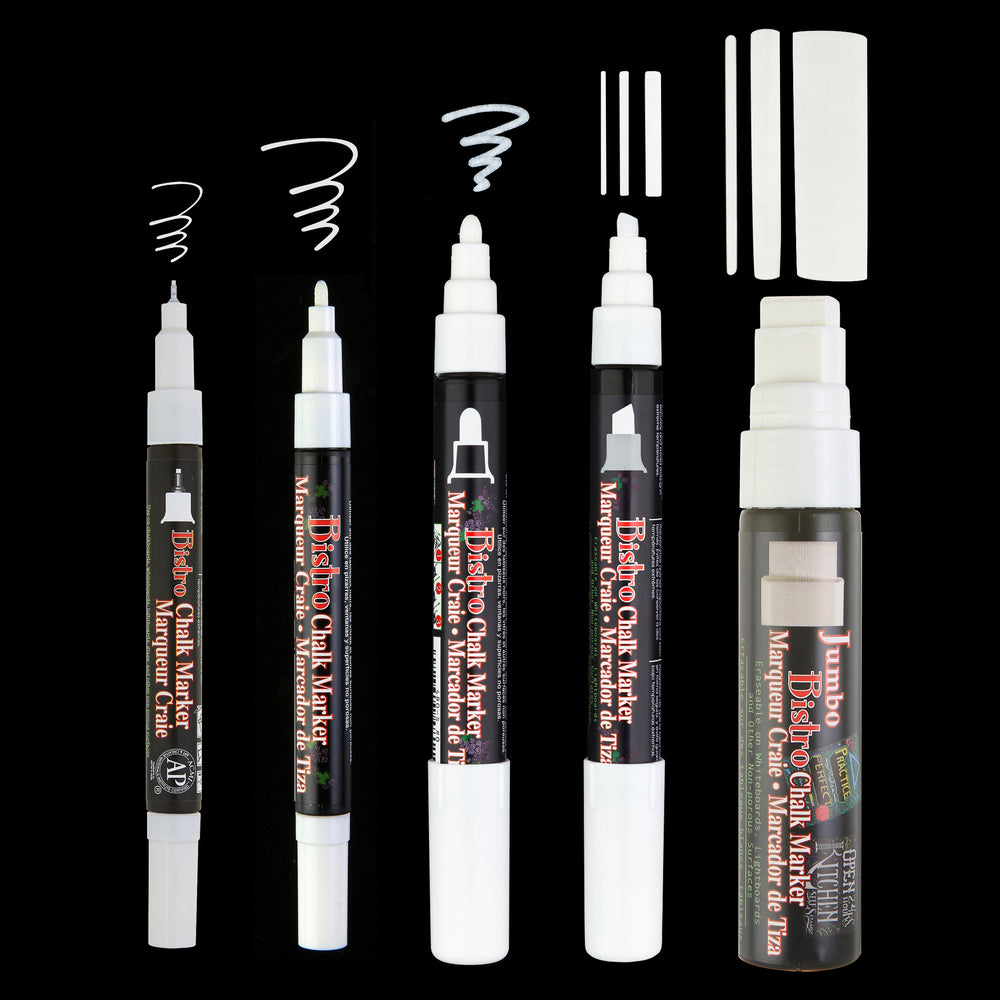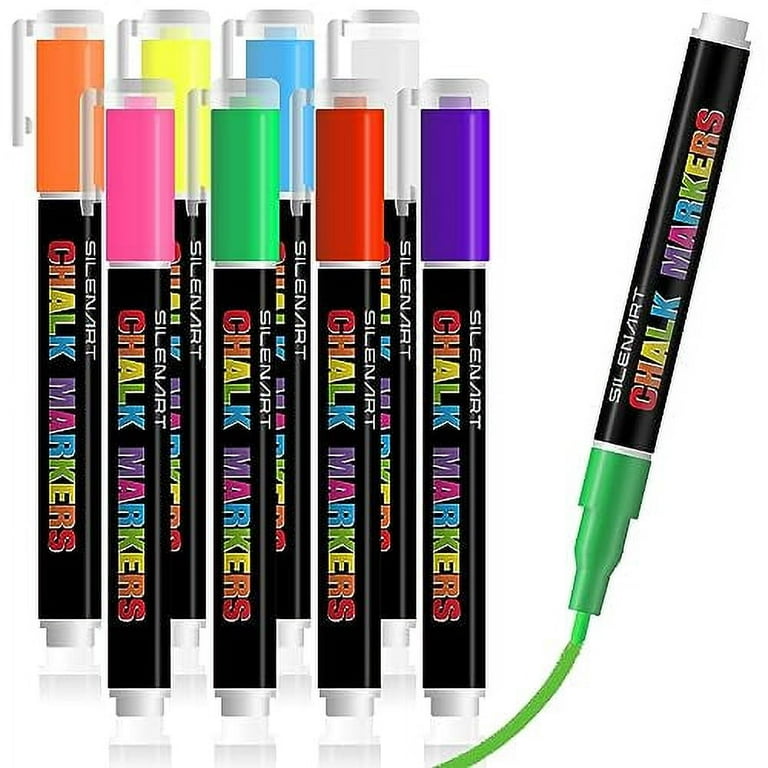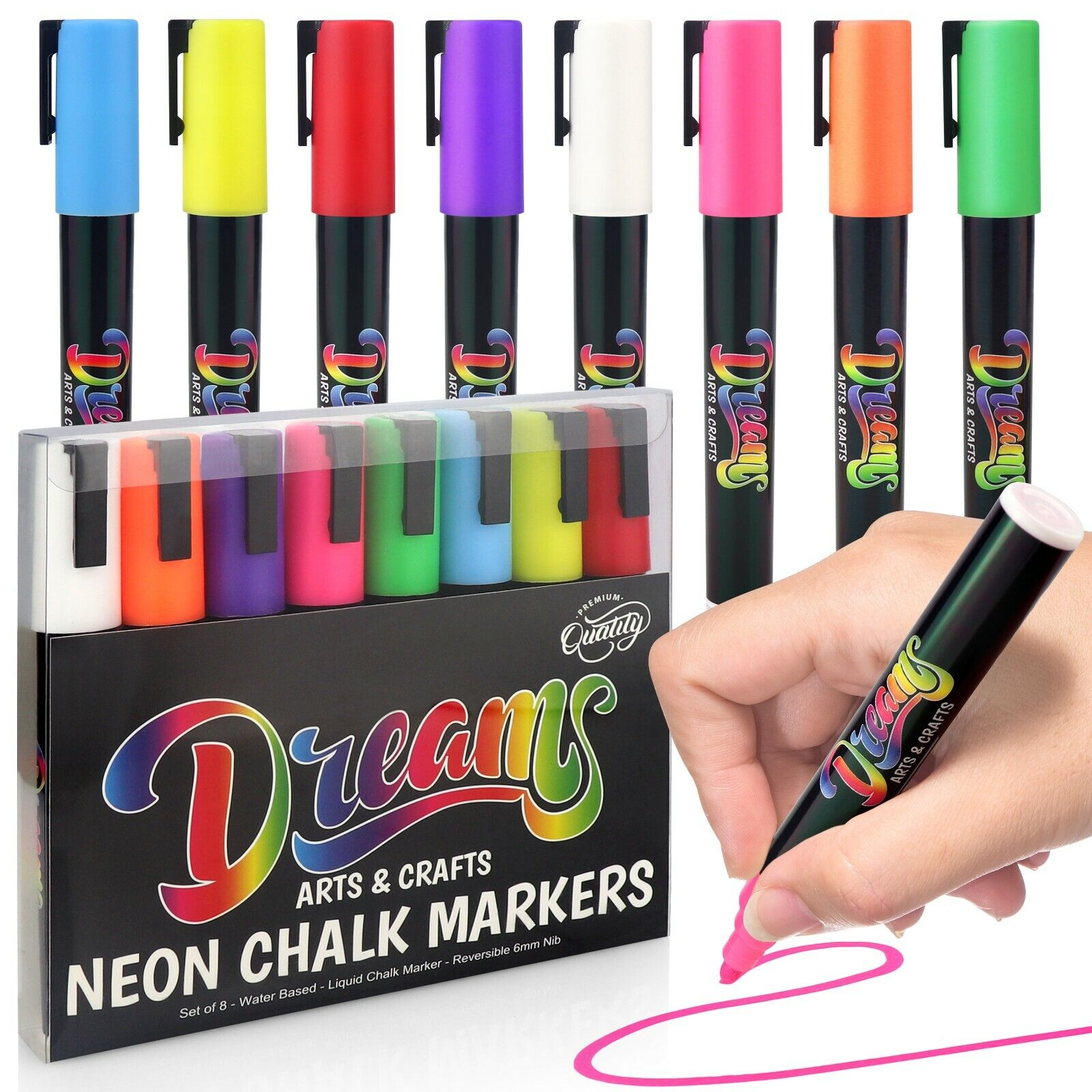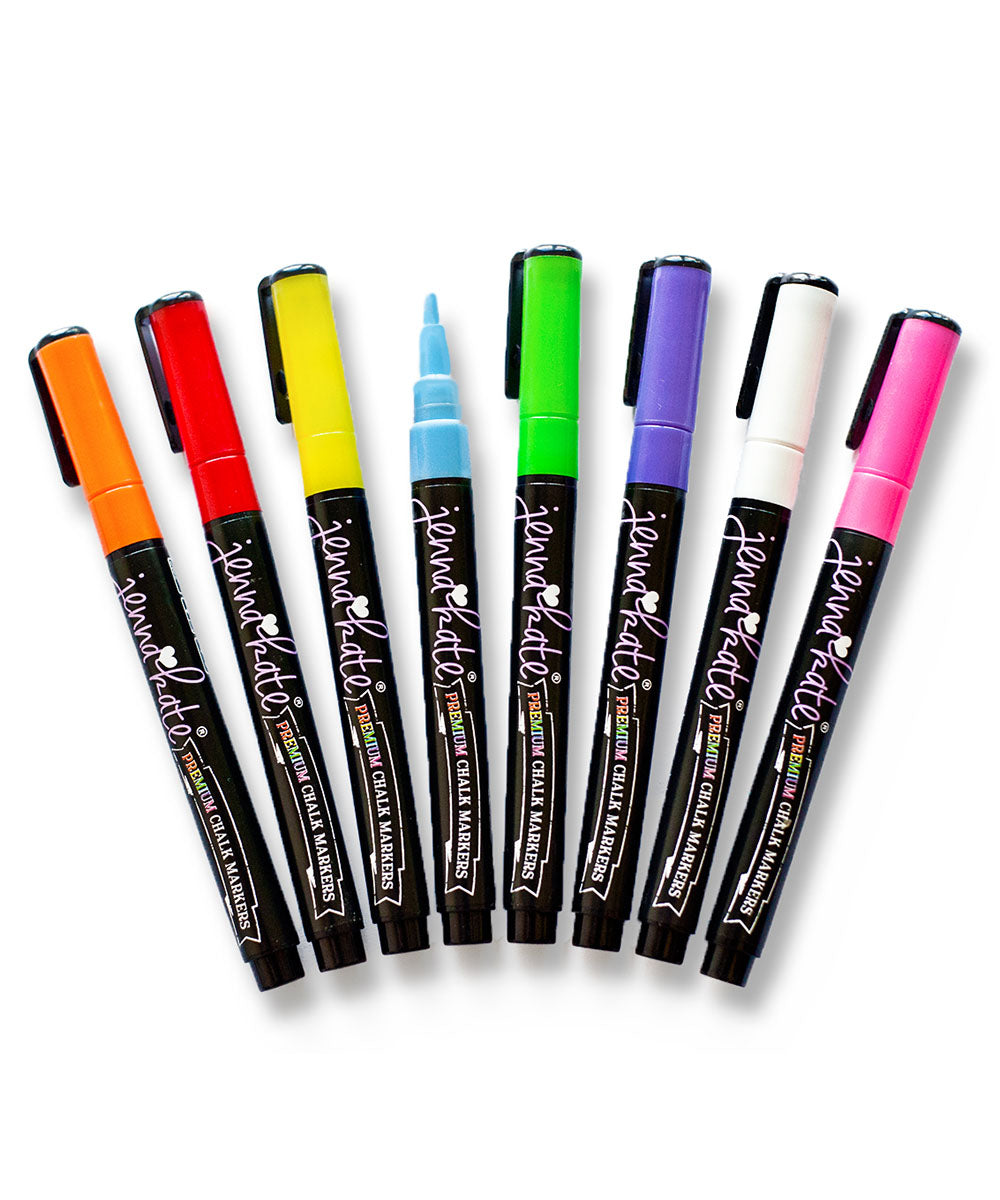Chalk markers have revolutionized the way we decorate, label, and communicate on non-porous surfaces. These versatile tools combine the classic charm of traditional chalk with the vibrant colors and precision of modern markers, offering endless possibilities for creative expression in various settings. In this comprehensive guide, we will delve into the world of chalk marker, exploring their features, applications, and tips for optimal use.
Understanding Chalk Markers: Key Features and Types
What Are Chalk Markers?
Chalk markers, also known as liquid chalk markers or chalk pens, are specialized writing instruments filled with water-based, pigmented ink that dries to a chalk-like finish. Unlike traditional chalk, they do not produce dust and can be used on non-porous surfaces like chalkboard paint, glass, mirrors, metal, plastic, and slate. Chalk markers offer the following key benefits:
- Vibrant Colors: Available in a wide array of hues, chalk markers provide bright, eye-catching colors that stand out on dark or light backgrounds.
- Erasability: Most chalk marker ink can be easily wiped off with a damp cloth or wet wipe, allowing for effortless corrections and updates.
- No Dust: Unlike traditional chalk, these markers produce no mess or dust, making them ideal for indoor use, especially in homes, classrooms, and restaurants.
- Precision and Control: With fine or medium tip sizes, chalk markers enable users to create intricate designs, write legibly, and draw crisp lines.
Types of Chalk Markers
There are two primary types of chalk markers, distinguished by their ink composition and erasability:
Water-Based Chalk Markers: These markers contain water-soluble pigments and are generally easier to erase. They are suitable for temporary designs and frequent content changes.
Oil-Based Chalk Markers: While still erasable, oil-based markers use a blend of pigments and oils, resulting in longer-lasting, more resistant ink. They may require more effort or specific cleaning solutions to remove completely.
Applications and Uses of Chalk Markers
Home Decor
Chalk markers are a popular choice for home decorators seeking to add a personal touch to their living spaces:
- Chalkboard Walls and Painted Surfaces: Transform any wall or surface into a writable canvas using chalkboard paint. Chalk markers allow you to create stylish calendars, menus, to-do lists, or artwork that can be updated effortlessly.
- Furniture and Accessories: Personalize glass vases, mason jars, ceramic plates, or metal signs with custom designs or messages using chalk markers. Their erasable nature makes it easy to switch up your decor for holidays, events, or seasonal themes.
Education and Learning
Chalk markers bring a new level of engagement and creativity to educational settings:
- Classroom Teaching: Teachers can create colorful, engaging visuals on whiteboards, chalkboards, or windows, making lessons more interactive and memorable. The ease of erasing allows for quick adjustments during class or between lessons.
- Student Projects: Encourage students to use chalk markers for art projects, presentations, or collaborative brainstorming sessions. The vibrant colors and precision tips foster creativity while promoting neatness and clarity.
Business and Retail
Chalk markers offer practical and aesthetically pleasing solutions for businesses:
- Menu Boards and Signage: Restaurants, cafes, and bars can display eye-catching menus, daily specials, or promotional messages on chalkboard or acrylic menu boards. Chalk markers’ erasability ensures quick updates as needed.
- Window Displays and Advertising: Draw attention to your storefront with eye-catching window displays created using chalk markers on glass. Temporary promotions, sales, or seasonal greetings can be easily changed without damaging the surface.
Art and Crafting
Chalk markers are a valuable addition to any artist or crafter’s toolkit:
- Mixed Media Art: Incorporate chalk markers into your mixed media projects for bold, vibrant accents or delicate details. Their compatibility with various surfaces opens up new creative possibilities.
- DIY Gifts and Decor: Create personalized, handmade gifts such as customized wine glasses, coasters, or ornaments using chalk markers. The erasable nature allows for experimentation and correction before the final design is set.
Tips for Optimal Use of Chalk Markers
Chalk markers are versatile tools that can add vibrant, eye-catching designs to various surfaces such as chalkboards, glass, mirrors, whiteboards, and more. To ensure optimal use and achieve the best results with your chalk markers, consider the following tips:
-
Surface preparation
- Test on a small, inconspicuous area first to ensure compatibility and easy removal. While most non-porous surfaces work well with chalk markers, some may not be suitable or may require special cleaning methods.
- Clean the surface thoroughly with a mild detergent and water or an appropriate cleaner, then dry it completely. A clean, dust-free surface will improve marker adhesion and clarity.
-
Shake and prime the markers
- Before using a new or recently used chalk marker, shake it vigorously with the cap on for at least 30 seconds to mix the ink evenly.
- Press the tip down several times on a scrap paper or a designated priming area until the ink flows smoothly. This ensures consistent color and prevents streaks or blotches.
-
Applying pressure and technique
- Apply moderate pressure while writing or drawing to allow the ink to flow freely. Too little pressure may result in faint lines, while too much pressure could cause oversaturation or bleeding.
- For fine details, use the tip of the marker; for broader strokes, angle the marker slightly or use its side. Experiment with different techniques to achieve desired line thickness and style.
-
Layering and blending
- Allow each layer of ink to dry completely before applying another, especially if you’re layering colors or creating gradients. This prevents smudging and allows for better color saturation.
- Some chalk markers may be blendable when wet, allowing you to create unique effects by gently overlapping or smudging colors together. Test this on a separate surface before attempting it on your project.

-
Erasing and cleaning
- Most chalk marker ink can be easily removed from non-porous surfaces with a damp cloth or sponge. For stubborn residue, use a mild detergent or a dedicated chalkboard cleaner.
- Always follow the manufacturer’s instructions for erasing specific types of surfaces or markers. Some surfaces (e.g., certain chalkboard paints) may require more aggressive cleaning methods.
-
Storage and maintenance
- After use, firmly replace the cap to prevent the ink from drying out. Store markers horizontally to maintain even ink distribution.
- If a marker hasn’t been used for an extended period, you may need to repeat the shaking and priming process before use.
- Keep markers away from extreme temperatures, direct sunlight, and open flames, as these conditions can affect ink quality and performance.
-
Variety of colors and tip styles
- Take advantage of the wide range of colors available in chalk marker sets to create visually appealing designs. Consider color harmony, contrast, and the intended mood of your message or artwork.
- Different tip styles, such as bullet, chisel, or brush tips, offer versatility in line width and stroke control. Choose the right tip for your project, or invest in a set with multiple tip options.
By following these tips, you’ll be able to make the most of your chalk markers, creating beautiful, professional-looking designs on a variety of surfaces.
Conclusion
Chalk markers have emerged as a versatile, user-friendly, and environmentally friendly alternative to traditional chalk, offering a world of creative possibilities for various applications. From home decor and education to business and art, these markers enable users to create vibrant, erasable designs with precision and ease. By understanding their features, types, applications, and best practices, you can unlock the full potential of chalk markers and transform any non-porous surface into a canvas for your imagination.




